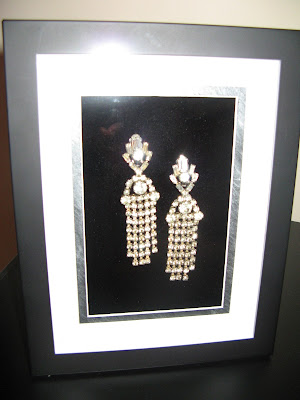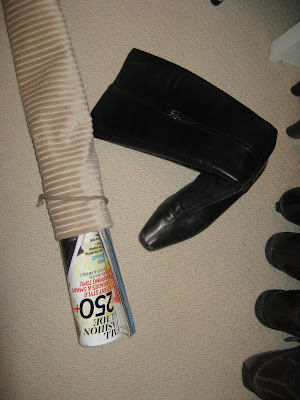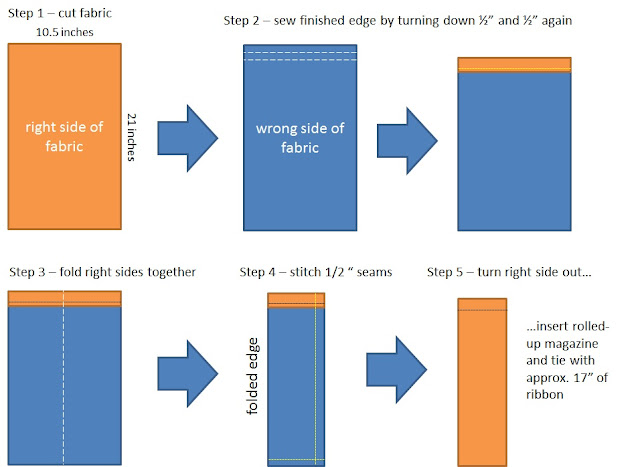As
part of a family room redo for a friend I reworked an existing photo
wall. My friend and her mom made a good attempt at originally setting it up, but we decided to add some non-photo items and adjust it a little bit. Included here are some general guidelines
I followed to come up with the final design.
Let
me start by saying there a lot of online examples of photo walls where you can
buy particular sizes of frames and go with a pre-set configuration. This is a great fool-proof way to approach a photo collage. However, if you already have a bunch of
random frames you want to use – here are a few guidelines to help you create
your own custom configuration. I call
them “guidelines” and not “rules” because I don’t think they are absolute, but
if you have a configuration that feels “off,” they might help you tweak it and
make it a little more appealing.
(1) Start
with a large piece of paper. This needs to be at least as large as the estimated space to be taken up by the photo collage on the wall. Lay the paper on the floor. You have
probably seen this method on design shows or perhaps from purchased photo wall
sets that provide a paper template. (My choice
for this method are large pieces of graph paper from an office supply
store. They come in those giant size
pads that can go on an easel. I tape
them together for larger configurations.
They make it super easy to keep everything level and allow for easy
spacing between frames.) You will be
drawing an outline of the frames onto the paper once your configuration is
complete, as well as marking the location of the hanger(s) for each frame. Last, you will label the outlines of the frames by photo to make
hanging a breeze.
(Side-note: the large graph paper is also perfect for making patterns for pillow
covers. No measuring required – just
count squares and cut!)
Here is the photo of the template we made for the photo wall redo. This is made up of four giant pieces of graph paper taped together. Each frame is outlined, labeled and marked exactly where the nail holes need to be. In addition - for those frames requiring two holes, I used the "tape method" found on the following pin on Pinterest. ( 1-Put a piece of tape on the back of a frame covering both holes. 2-Mark the holes on the tape. 3-Mark the middle of the frame on the tape. 4-Transfer tape onto the paper lining up the center point of the frame outline, with the center point on the tape.)
(2) Begin
laying out your photos. Here are some
tips I have found helpful:
a) Distribute photo sizes across the collage
for balance. Start placing your frames out on the floor on
top of your large piece of paper. Keep in mind that you want the overall collage to feel "balanced". If you
put all the large frames on one side, and all small frames on another – it may
look lopsided. In addition, if you put
all the large frames on top and the smaller ones on the bottom, it can appear
top heavy. I laid out the large frames
first and filled in the smaller and medium frames around them until I was happy
with the overall balance of the collage.
b) Make sure the spacing is relatively
consistent between frames: not too far apart nor too close together. In the original collage they were just a
little too far apart. A couple inches
for spacing worked out well here. If
they are too far apart, the frames appear too separate and might look more like
clutter; rather than a cohesive collage that the eye can focus on.
c) Distribute non photo items within the
collage. If you are using non-photo items like the few
examples in this photo wall, I found that a couple things worked here (1)
having them evenly distributed within the collage and also (2) having them
completely surrounded by photos, I say this because if I set it up to leave one of the
non-photo items on the “outskirts” of the collage, it looked sort of “stranded"
out there.

d) Avoid having negative space that
completely “slices” through your collage.
Here is what I mean – can you draw a line completely through the collage
with negative space? In the original
collage there was a couple places where the negative space sliced the collage
into sections (see photo below).
Alternatively, in the final product, you can’t draw a straight line
through the collage without something stopping it. An important note – I’ve seen some pretty
neat looking photo walls out there that deliberately use
negative space as part of the overall photo wall composition, and therefore
this guideline wouldn’t apply. Once
again – this a guideline and not a rule.

e) Don’t hang the overall collage too high. This particular photo wall was kept higher
than what design standards might dictate to prevent little ones from getting to
it from the sofa. However, we did bring
the height down slightly from the original photo wall. To hang the frames, tape
the paper to the wall (verifying that it is level) and nail directly through the paper on the locations you
marked for each frame. You can pull the
paper off once all the nails are in place.
Then use your labeled template to help interpret which photos go on which nails.
Here's another photo collage I created using the same general guidelines. I was very happy to have the paper template as I ended up moving this collage from one room to another - it was so easy to just place the template on the wall in the new room and hammer the nails in. The moral of that story - save your paper templates :o)


















































